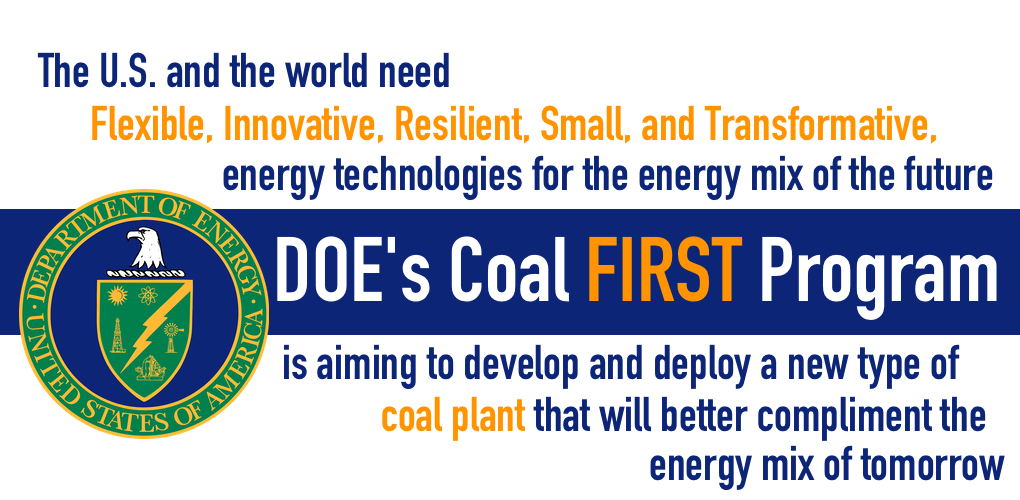
For Global Energy Leadership, Think Coal FIRST
What does the coal plant of the future look like?
For too many people, the answer is that we don’t need new coal technology nor a new generation of plants. That line of thinking is a huge mistake.
Too many self-described energy and climate experts seem blissfully unaware of global energy trends and global energy use. Many policymakers, including what would appear to be the entire field of Democratic presidential candidates, think that U.S. energy and climate leadership will be established by phasing out coal, as if that’s at all a replicable or useful approach in energy hungry, developing nations. If these candidates and their advisors don’t know that global coal consumption continues to grow, and that coal remains the world’s leading fuel for electricity generation, it’s well past time they find out.
The world needs new, more efficient, more flexible and lower emission coal technology. And the U.S., with the world’s largest coal reserves and an unmatched capacity for innovation, should take the reins in delivering it. Fortunately, the U.S. Department of Energy (DOE) is leading the charge.
DOE’s Coal FIRST (Flexible, Innovative, Resilient, Small, and Transformative) program is setting goals on how the coal fleet of the future needs to perform and what it should look like. Coal FIRST is aiming to develop and deploy a new type of coal plant that will better compliment the energy mix of the future. DOE is aiming for smaller, more flexible units that can complement the peaks and valleys that come with intermittent renewables. Today’s existing coal fleet, while essential to providing affordable, reliable power, was designed to run continuously for optimal efficiency, not to accommodate swings in solar and wind generation.
The plants Coal FIRST envisions will be extremely efficient, small but capable of stacking to meet increased demand, have near-zero emissions, with minimized water consumption and will be far more agile than anything currently available. If that kind of innovative plant seems too good to be true, think again.
Coal FIRST is just the kind of innovative, advanced energy technology both the U.S. and world need. While these super-efficient, flexible and clean plants are needed to ensure our own electricity mix remains balanced and to provide the fuel security and resilience that underpins our grid reliability, the market for this technology overseas is potentially enormous. It’s a market the U.S. should capture.
Hundreds of new coal plants are planned or already under construction around the world. Asia already consumes nearly three quarters of the world’s annual coal production. Coal is the fuel driving industrialization and lifting tens-of-millions out of poverty. Affordable, abundant and secure, it’s going to remain the fuel of choice in many nations well into the future.
While the U.S. is currently using quick-ramping natural gas plants to help integrate renewables, most of the world doesn’t have that option. Gas remains a luxury fuel in most nations. Grid-scale battery storage faces innumerable hurdles of its own and can hardly be expected to play a significant global role in the foreseeable future. Advanced coal technologies are a must.
The Coal FIRST program, and the type of plant it promises, isn’t something that falls into the category of nice to have. No, if we are serious about leading the global effort to reduce emissions, it’s essential.
Not so long ago, coal and advanced coal technology were a place of bipartisan agreement. Then presidential candidate Barack Obama told a campaign rally in 2008, “clean coal technology” could make America “energy independent,” expressing confidence that American ingenuity could solve the emissions challenge. He said: “This is America. We figured out how to put a man on the moon in 10 years. You can’t tell me we can’t figure out how to burn coal that we mine right here in the United States of America and make it work.”
That’s a message many so-called experts, policymakers and current presidential candidates desperately need to hear.
- On January 17, 2020
